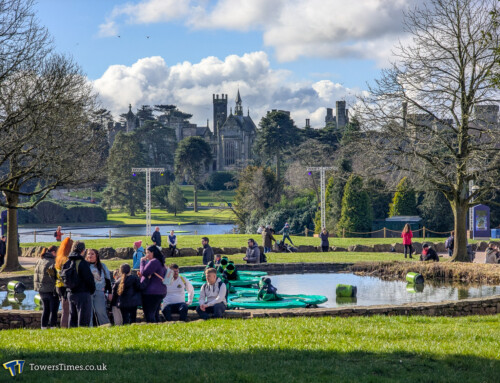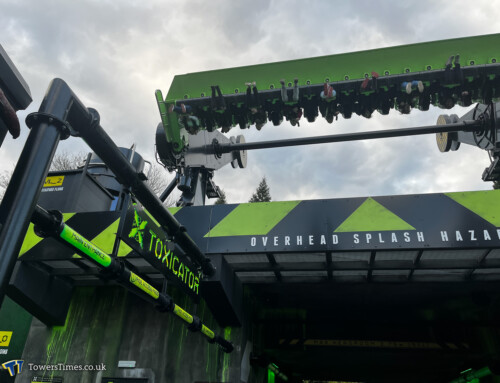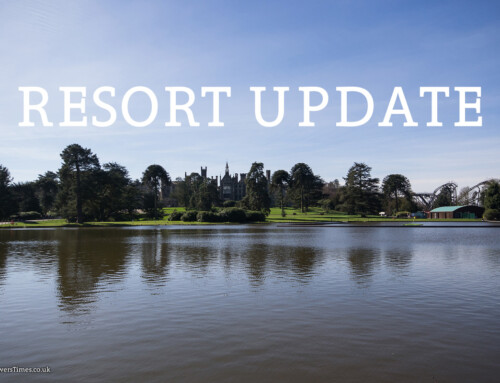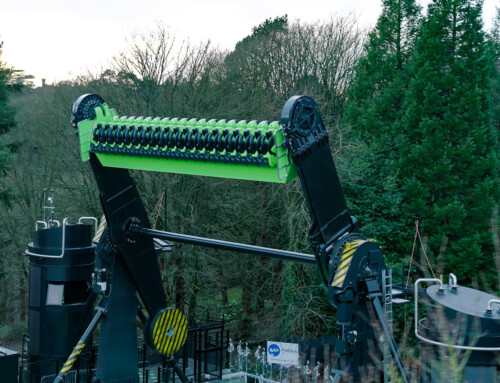Merlin Attractions Operations Limited, the company which operate Alton Towers Resort, have today been in court as the two day sentencing hearing for the incident on The Smiler, which occurred on 2nd June 2015, commenced at Stafford Crown Court.
During the first day of the hearing Bernard Thorogood, prosecuting barrister for the Health and Safety Executive (HSE), set out the series of factors which, in the view of the HSE, were the cause of what happened on the ride as well as providing a more detailed account of events as to precisely what happened on the day of the incident and the subsequent impact on those involved.
On the day in question, the prosecution described how there were initially four trains in operation with train number five stored in the maintenance building. Due to the numbers visiting the park that day engineers were informed that that the fifth train would be required. It was during the process of adding this train that it became necessary to send an empty train around the track. At this point the engineers involved thought everything was fine and consequently handed control back to the ride operators. A train was loaded with passengers in preparation for the ride to be dispatched. One of the engineers observed on the control panel and noticed that there was no train at the foot of the vertical lift hill, they did not notice that the empty train had stalled. As a result they pressed a button simultaneously with another meaning the track was ready for another train. The prosecution pointed out that wind speeds on the day were an estimated 46 miles per hour, above the limit of 34mph recommended by the manufacturer as being safe for operation. The prosecution stated that it was these high winds which were responsible for the stall of the empty train, however this was disputed by Simon Antrobus, the barrister for the defence, who said that the stall was not caused by the winds and that instead the test train was “braked more than it should have done.” A timetable of events surrounding the incident was also laid out by the prosecution:
o 13:00: Fault reported
o 13:51: Crash happened
o 14:08: First 999 call
o 14:09: Community first responder on site
o 14:37: Ambulance and air ambulance arrived on site
o 14:57: Police arrive
Both the Judge and prosecution raised the delay in the emergency services being called to the scene and the inaccessibility of the site as being some of the most major aggravating factors in this case.
As part of the case for the prosecution a number of issues were raised surrounding the protocol for dealing with a stalled train and deficiencies in the training of staff. It was emphasised by both the HSE and Merlin Entertainments that the structure, engineering and computer systems of the ride were safe. Mr Thorogood explained that “the fault here lies with the employers” who failed to provide a “structured and considered system” for the engineers. It was described how both operators and engineers on the day followed the code of safe working practice, and that engineers “did their best” which led to the argument that Merlin were ultimately at fault for not devising a scheme to guide the work of their engineers and an expert report was said to have criticised senior management for failing to recognise the inadequacy of safety arrangements. The court heard how staff had come to distrust fault signals, including the one that was showing an error, and that staff made assumptions due to gaps in their knowledge. It was revealed that the Electrical Maintenance Team Leader said that as The Smiler was a new ride there was not an experienced engineer to call upon or for others to shadow. An unofficial safety procedure document was also produced by a team leader which had become standard when it was never meant to be. It was stated that had proper systems been in place the accident would not have happened.
It was acknowledged that Merlin Attractions Operations has co-operated fully with the investigation and that since the incident Merlin has put in place more robust safety management systems which have brought Technical Services and Ride Management closer together, plus a number of new measures have been implemented including new signs and mechanisms, new steps and access stairs into the pit area, detailed written procedures, a minimum number of passengers in order for trains to have sufficient mass to overcome winds, and the closure of the ride if winds reach 33.5mph. A lead engineer is now also responsible for decision making on fixing faults.
Also discussed by the prosecution was the impact of the incident on those concerned. The force of the crash was described as being the equivalent of a 1.5 tonne family car at 90mph. Those on the ride have suffered psychological, and in some cases, psychiatric, difficulties, as well as the physical injuries sustained.
Following the case from the prosecution, Simon Antrobus, barrister for the defence addressed the court and set out a number of points in response to those raised by the prosecution. He opened by apologising to those affected and admitted that Merlin “did wrong that day” and the incident “should never have happened” accepting the health and safety breaches, and its responsibility. Prior to and since the incident “the company has been a market leader and most reputable in its field”. The defence pointed out that they are not seeking to diminish their acceptance of responsibility through their mitigation and went on to highlight a number of things in relation both to events on the day and what has been put in place since. It was highlighted how the rollercoaster was reviewed and assessed by an independent organisation prior to being cleared for operation. The technicians involved in the ride thought that training by the manufacturer of the ride, Gerstlauer, would be best, training which would then be trickled down to those not present when the ride was installed. Only 1 of the 2 electrical engineers present on the day had been trained by the manufacturer, although Mr Atrobus said it would be a mistake to assume there were no follow ups but what didn’t happen was the next and final step to ensure that forms were completed and handed back confirming engineers had been trained. It was stated that the wind speed sensors, which at the time were installed by Oblivion, should have set an alarm off once there was a gust of 32mph but that this failed to happen. In light of what happened the defence explained that the company have looked to evaluate everything to ensure it doesn’t happen again across its entire operation. It was described how a number of measures have been introduced including the introduction of prompts from the control system to engineers; the requirement for a number of different buttons to be pressed by different people to confirm the ride is safe to operate after an alarm is triggered; and working with Gerstlauer to implement a ‘substantial protocol’ to cover maintenance of the ride.
Once the prosecution and defence had concluded their submissions Judge Michel Chambers QC requested further information in relation to Merlin Entertainments’ finances, facts which will contribute to determining the level of the fine which will be imposed to ensure it has a notable impact on the company. It was discussed how Merlin Entertainments reported a drop in turnover of approximately £2.3m year on year. In order to determine the full impact Judge Chambers requested a month by month breakdown of the turnover, as well as clarification on bonuses awarded to directors. At this point the case was adjourned until 10:30am on Tuesday 27th September.
TowersTimes will continue to monitor developments in the hearing and will bring you up to date news as we get it.




